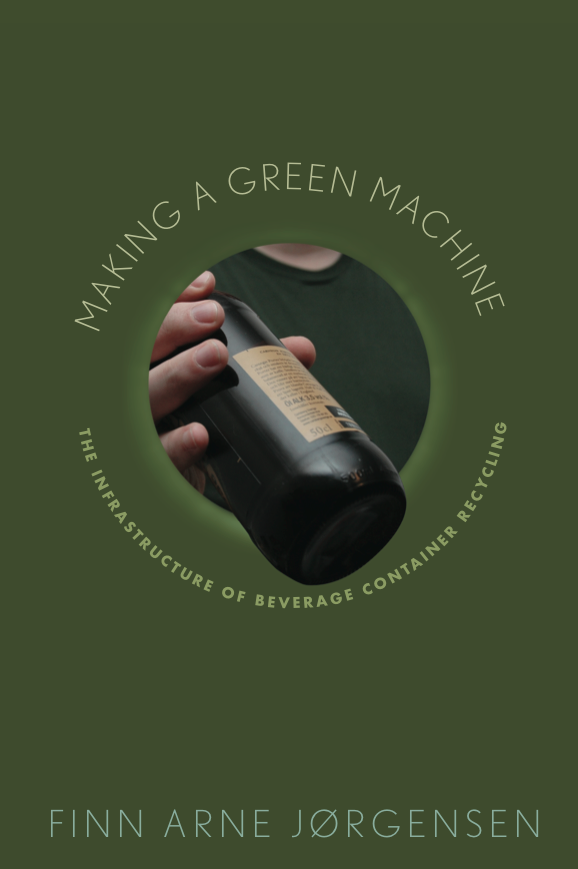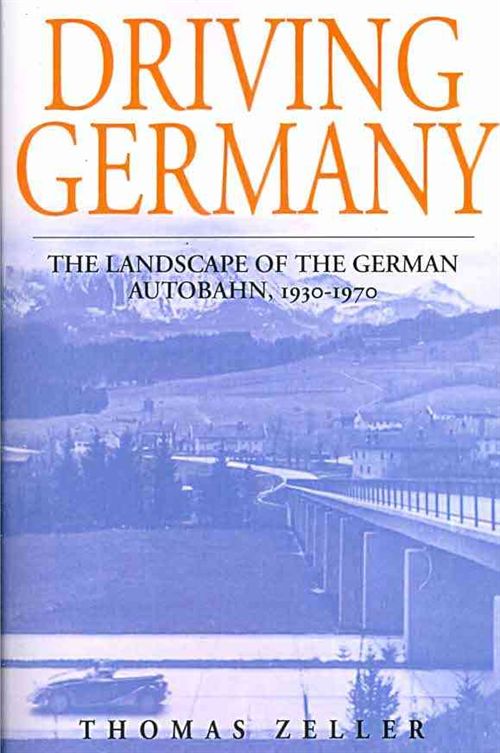Category: Member news
New book: New Natures
Envirotechies Dolly Jørgensen, Finn Arne Jørgensen, and Sara B. Pritchard have a new edited volume out – New Natures: Joining Environmental History with Science and Technology Studies, published with University of Pittsburgh Press. New Natures broadens the dialogue between the disciplines of science and technology studies (STS) and environmental history in hopes of deepening and even transforming understandings of human-nature interactions. The volume presents historical studies that engage with key STS theories, offering models for how these theories can help crystallize central lessons from empirical histories, facilitate comparative analysis, and provide a language for complicated historical phenomena. Overall, the collection exemplifies the fruitfulness of cross-disciplinary thinking.
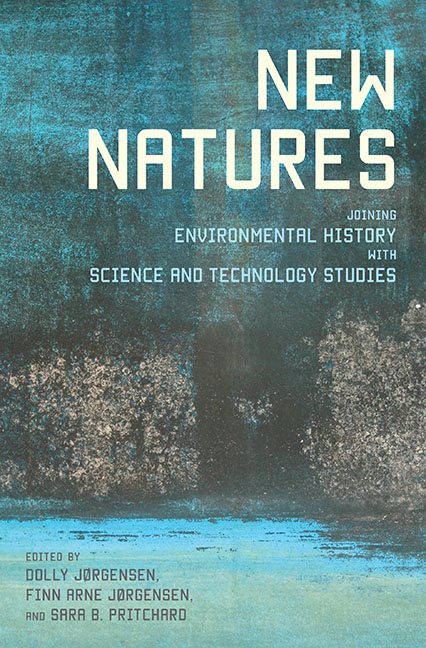
Table of contents
Preface
Sara B. Pritchard – “Joining Environmental History with Science and Technology Studies: Promises, Challenges, and Contributions”
Part I. Ways of Knowing
Anya Zilberstein – “The Natural History of Early Northeastern America: An Inexact Science”
Frank Uekotter – “Farming and Not Knowing: Agnotology Meets Environmental History”
Dolly Jørgensen – “Environmentalists on Both Sides: Enactments in the California Rigs-to-Reefs Debate”
Finn Arne Jørgensen – “The Backbone of Everyday Environmentalism: Cultural Scripting and Technological Systems”
Part II. Constructions of Environmental Expertise
Kevin C. Armitage – “The Soil Doctor: Hugh Hammond Bennett, Soil Conservation, and the Search for a Democratic Science”
Michael Egan – “Communicating Knowledge: The Swedish Mercury Group and Vernacular Science, 1965–1972”
Eunice Blavascunas – “Signals in the Forest: Cultural Boundaries of Science in Białowieża, Poland”
Part III. Networks, mobilities, and Boundaries
Tiago Saraiva – “The Production and Circulation of Standardized Karakul Sheep and Frontier Settlement in the Empires of Hitler, Mussolini, and Salazar”
Thomas D. Finger – “Trading Spaces: Transferring Energy and Organizing Power in the Nineteenth-Century Atlantic Grain Trade”
Stephen Bocking – “Situated yet Mobile: Examining the Environmental History of Arctic Ecological Science”
David Tomblin – “White Mountain Apache Boundary-Work as an Instrument of Ecopolitical Liberation and Landscape Change”
Valerie A. Olson – “NEOecology: The Solar System’s Emerging Environmental History and Politics”
Sverker Sörlin – “Epilogue: Preservation in the Age of Entanglement: STS and the History of Future Urban Nature”
New Book: The Story of N
Hugh Gorman’s The Story of N: A Social History of the Nitrogen Cycle and the Challenge of Sustainability examines the process by which humans, first, learned to bypass an important ecological constraint and, second, are learning to address concerns associated with having done so.
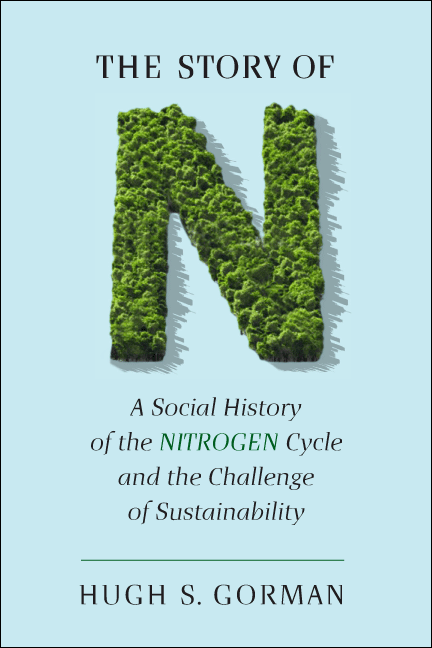
The ecological constraint, which existed up to the early twentieth century, involves a limit on the capacity of nitrogen-fixing bacteria to place nitrogen compounds into circulation. Given that protein is about sixteen percent nitrogen, this constraint translated into a limit on how much food and fiber could be produced by agricultural societies and, ultimately, on the size of cities. Indeed, by the nineteenth century, the demand for nitrogen compounds in Western Europe, not only for food and fiber but also for explosives, had exceeded the capacity of bacteria to supply what was needed. Imports of nitrogen (in the form of food, cotton, and material such as Peruvian guano) helped, but scientists and national leaders realized that flows of this material could be interrupted by war. They, and the late-nineteenth century scientists who informed them, spoke of an impending nitrogen crisis.
The introduction in 1913 of the Haber-Bosch process for converting inert atmospheric nitrogen into ammonia freed humans from their dependency on nitrogen-fixing bacteria and put an end to the nineteenth-century nitrogen crisis. However, this innovation (and the unintentional fixing of nitrogen through combustion processes) had consequences. Today, societies fix nitrogen on the same scale as the world’s bacteria, resulting in (from a human perspective) too much nitrogen entering circulation rather than too little. The second half of the The Story of N examines the process of societies learning to address these concerns. It suggests that the notion of sustainability involves, at least in part, in societies adaptively learning to establish limits when innovations push them into uncharted ethical territory.
Please visit www.storyofn.com.
Winner of the Joel A. Tarr Envirotech Article Prize for 2011
We are pleased to announce that Christopher F. Jones is the winner of the 2011 Joel A. Tarr Envirotech Prize for his article, “A Landscape of Energy Abundance: Anthracite Coal Canals and the Roots of American Fossil Fuel Dependence, 1820-1860,” Environmental History 15 (July 2010): 449-484. In his article, Jones uses the concept of an “energy landscape” as an effective new tool for visualizing the causes and consequences of society’s energy choices, as well as the contingencies that inform the process of energy change. Drawing upon but also extending the seminal work of William Cronon and James Scott, Jones demonstrates that entrepreneurs, boosters, and other modernists built a new transportation-based energy regime in advance of market demand. By transforming the built environment and aggressively encouraging consumers to adopt anthracite coal, Jones argues, this regime helped to foster the subsequent and ultimately unsustainable American shift to fossil fuel sources that has continued to this day. Prize committee members applauded Jones for his skillful fusing of a detailed empirical analysis of the American Mid-Atlantic region with the broader theoretical concept of “energy landscapes.” Jones also breaks new ground in incorporating the spatial issue of transportation networks into our understanding of energy systems. By offering a fresh approach to dealing with the complex interactions between cultural, economic, technological, and ecological factors, Jones makes an important contribution to the field of envirotechnical history and theory.
On the behalf of the prize committee:
Timothy LeCain
Erik Rau
Heike Weber
New book: Making A Green Machine
Finn Arne Jørgensen‘s book Making A Green Machine: The Infrastructure of Beverage Container Recycling is out!
Consider an empty bottle or can, one of the hundreds of billions of beverage containers that are discarded worldwide every year. Empty containers have been at the center of intense political controversies, technological innovation processes, and the modern environmental movement. Making a Green Machine examines the development of the Scandinavian beverage container deposit-refund system, which has the highest return rates in the world, from 1970 to present. Finn Arne Jørgensen investigates the challenges the system faced when exported internationally and explores the critical role of technological infrastructures and consumer convenience in modern recycling. His comparative framework charts the complex network of business and political actors involved in the development of the reverse vending machine (RVM) and bottle deposit legislation to better understand the different historical trajectories empty beverage containers have taken across markets, including the U.S. The RVM has served as more than a hole in the wall–it began simply as a tool for grocers who had to handle empty refillable glass bottles, but has become a green machine to redeem the empty beverage container, helping both business and consumers participate in environmental actions.
Visit the book’s page at Rutgers University Press:
http://rutgerspress.rutgers.edu/acatalog/making_a_green_machine.html
Out in paperback: Driving Germany
Tom Zeller’s book Driving Germany is now out in paperback: http://www.berghahnbooks.com/title.php?rowtag=ZellerDriving (15% discount if you buy through this link.)
New book: The American Urban Reader: History and Theory
Steven Corey (Urban Studies, Worcester State University) has published The American Urban Reader: History and Theory (Routledge, 2011) with his department colleague, Lisa Krissoff Boehm, that includes an entire section dedicated to the urban environment. In this anthology Corey and Boehm have included Joel Tarr’s “The Metabolism of the Industrial City: The Case of Pittsburgh,” selections from Martin Melosi and Joseph Pratt’s book, Energy Metropolis: An Environmental History of Houston and the Gulf Coast, and David Naguib Pellow and Lisa Sun-Hee Park’s book The Emergence of Silicon Valley: High-Tech Development and Ecocide, 1950-2001. Among the other works in the volume relating to the environment and technology are selections from Sam Bass Warner, Jr., John T. Cumbler, Clifton Hood, and Hal Rothman.
More information from Routledge: http://www.routledge.com/books/details/9780415803984/.
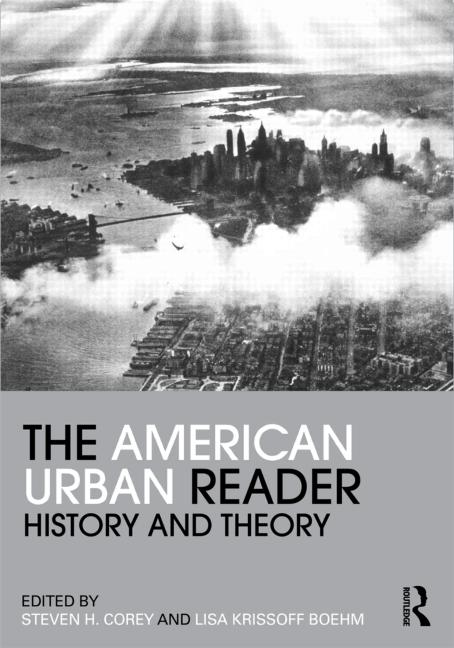
The American Urban Reader
New book: Evolutionary History
Ed Russell’s new book is out:
Evolutionary History: Uniting History and Biology to Understand Life on Earth
We tend to see history and evolution springing from separate roots, one grounded in the human world and the other in the natural world. Human beings have, however, become probably the most powerful species shaping evolution today, and human-caused evolution in other species has probably been the most important force shaping human history. This book introduces readers to evolutionary history, a new field that unites history and biology to create a fuller understanding of the past than either can produce on its own. Evolutionary history can stimulate surprising new hypotheses for any field of history and evolutionary biology. How many art historians would have guessed that sculpture encouraged the evolution of tuskless elephants? How many biologists would have predicted that human poverty would accelerate animal evolution? How many military historians would have suspected that plant evolution would convert a counter-insurgency strategy into a rebel subsidy? With examples from around the globe, this book will help readers see the broadest patterns of history and the details of their own life in a new light.
More information on the book from Cambridge University Press: http://www.cambridge.org/aus/catalogue/catalogue.asp?isbn=9780521745093&ss=cop

Edmund Russell, Evolutionary History
New book: Confluence – The Nature of Technology and the Remaking of the Rhône

Envirotechie Sara Pritchard’s book on the Rhône is out!
Because of its location, volume, speed, and propensity for severe flooding, the Rhône, France’s most powerful river, has long influenced the economy, politics, and transportation networks of Europe. Humans have tried to control the Rhône for over two thousand years, but large-scale development did not occur until the twentieth century. The Rhône valley has undergone especially dramatic changes since World War II. Hydroelectric plants, nuclear reactors, and industrialized agriculture radically altered the river, as they simultaneously fueled both the physical and symbolic reconstruction of France.
In Confluence, Sara B. Pritchard traces the Rhône’s remaking since 1945. She interweaves this story with an analysis of how state officials, technical elites, and citizens connected the environment and technology to political identities and state-building. In the process, Pritchard illuminates the relationship between nature and nation in France.
Pritchard’s innovative integration of science and technology studies, environmental history, and the political history of modern France makes a powerful case for envirotechnical analysis: an approach that highlights the material and rhetorical links between ecological and technological systems. Her groundbreaking book demonstrates the importance of environmental management and technological development to culture and politics in the twentieth century. As Pritchard shows, reconstructing the Rhône remade France itself.
Visit the book’s page at Harvard University Press: http://www.hup.harvard.edu/catalog.php?recid=31134
New book: The Illusory Boundary Environment and Technology in History
Great news – The Illusory Boundary is finally out, a collection of articles edited by Marty Reuss and Steve Cutcliffe and with many envirotechies as contributors. Here is the description from University of Virginia Press.

The Illusory Boundary
